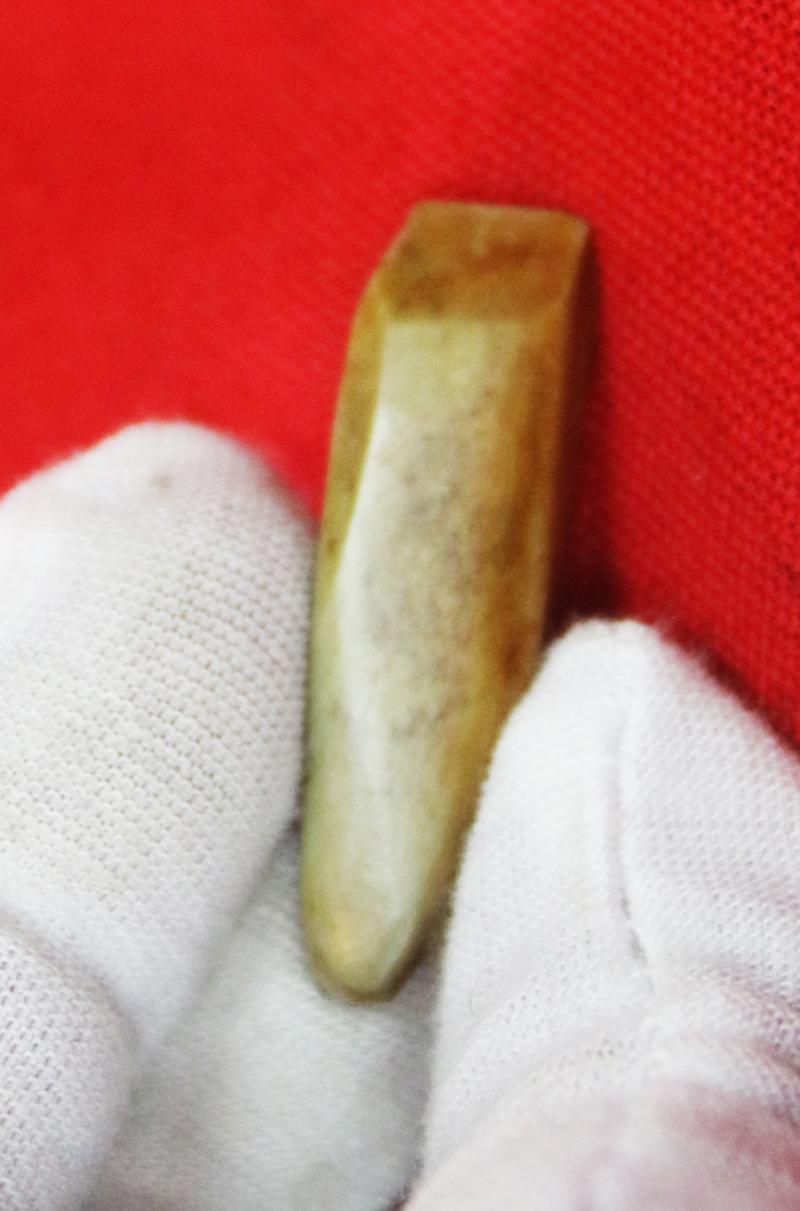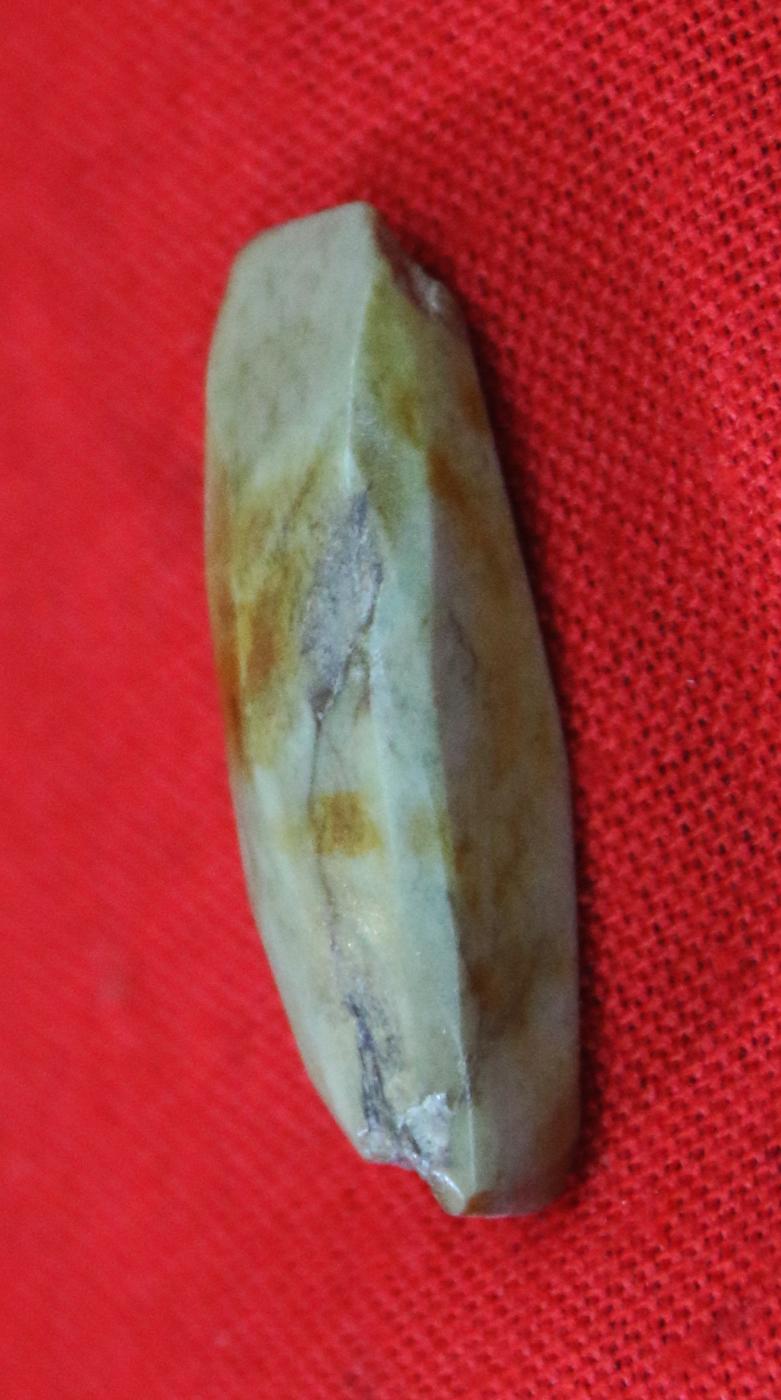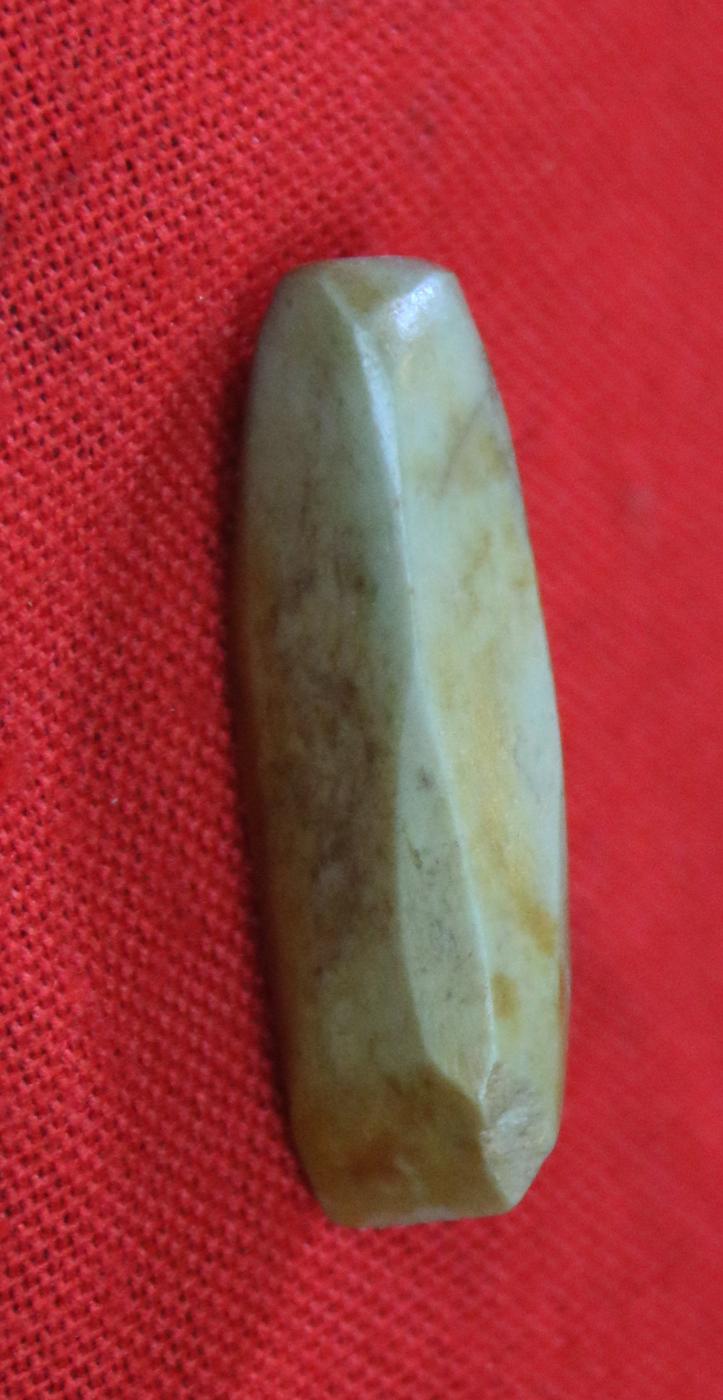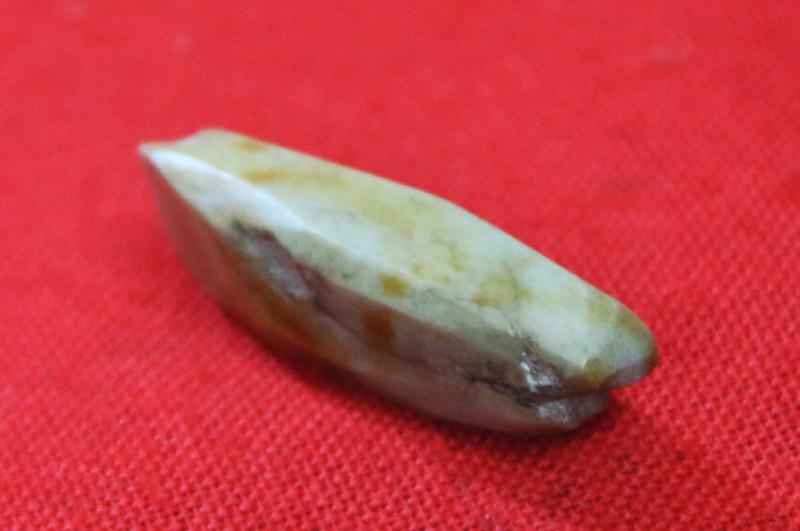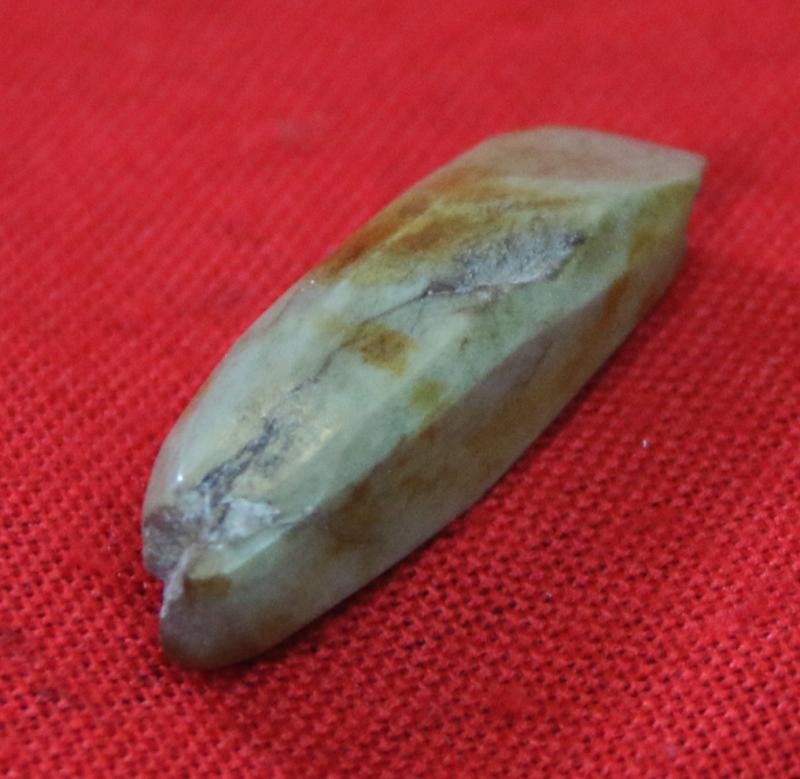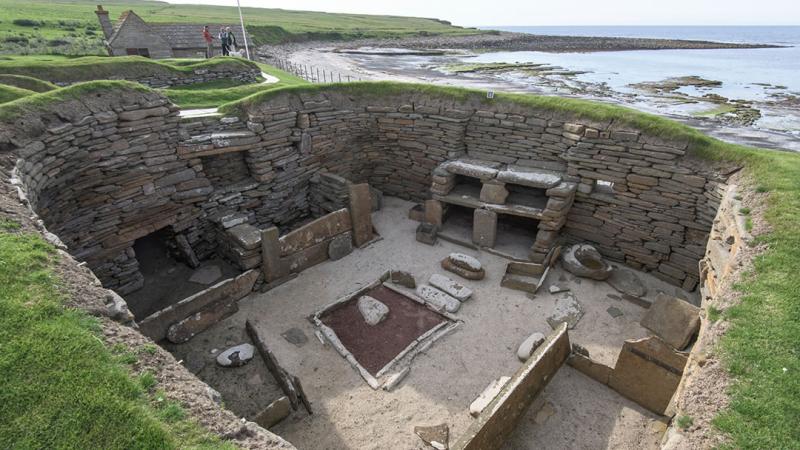A Small & Beautiful Neolithic 7000 to 10000 Year Old Small Polished Stone Age Symbolic Flint Hand Axe 5000 to 8000 bc
In the Neolithic period (later stone age) people started to settle down and start farming. At places such as Springfield Lyons, in Chelmsford, Essex, these early settlements have been identified. It was also at this time when stone tools, which up until this point had been purely functional, started to take on a more symbolic meaning.
A beautiful piece of ancient craftsmanship, with the hand polishing of flint being incredibly labour intensive, even for the smallest of examples.
Besides being tools, axes could also have important ritual and social functions. Polished stone axes and other tools that were never used have been found across the county, showing changes in social hierarchy and possibly even the development of religion.
In the Neolithic period people began to use flint axes that had been polished. The polishing of flint marks such a significant technological advance that archaeologists use this to draw the boundary between the Mesolithic and the Neolithic periods.
Although small polished axes are readily believed to be symbolic for ceremonies some speculate they could also be the first human concept of jewellery, the evolution of two dimensional art of cave paintings, into three dimensional art, being artefacts of rare and fine materials to be given or traded.
The population grew, and this led to competition for space, power and leadership. The farmer could mark his position in battle, as well as with peaceful exchanges of gifts with neighbours and friends. Gifts could be ornate axes of flint or amber beads. Many of these riches were sacrificed to the powers above in lakes. In the early Neolithic period people were also sometimes executed and thrown in lakes. Conflicts among the farmers may have triggered off violence and killings. Human sacrifices were also made. Both young and old people ended their days in this way.
The Neolithic also known as the "New Stone Age", the final division of the Stone Age, began about 12,000 years ago when the first development of farming appeared in the Epipalaeolithic Near East, and later in other parts of the world. The division lasted until the transitional period of the Chalcolithic from about 6,500 years ago (4500 BC), marked by the development of metallurgy, leading up to the Bronze Age and Iron Age. In Northern Europe, the Neolithic lasted until about 1700 BC, while in China it extended until 1200 BC. Other parts of the world (the New World) remained in the Neolithic stage of development until European contact.
The Neolithic comprises a progression of behavioral and cultural characteristics and changes, including the use of wild and domestic crops and of domesticated animals.
The term Neolithic derives from the Greek neos and lithos "New Stone Age". The term was coined by Sir John Lubbock in 1865 as a refinement of the three-age system.
Photo of Skara Brae, Orkney, Neolithic home, thought to be 5,000 years old
38 mm long
Code: 24912
135.00 GBP

